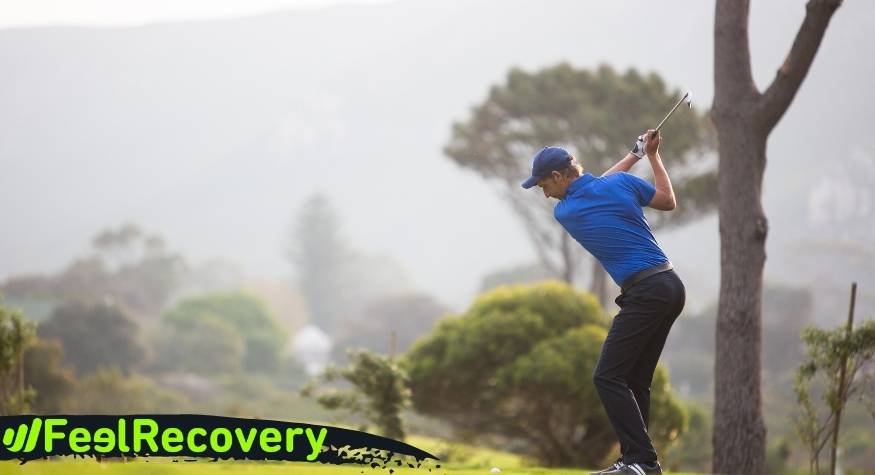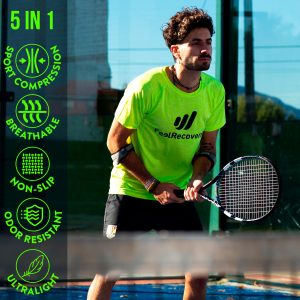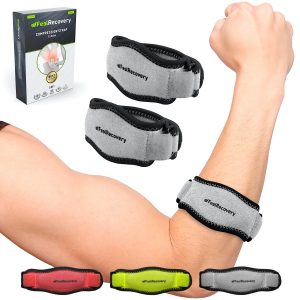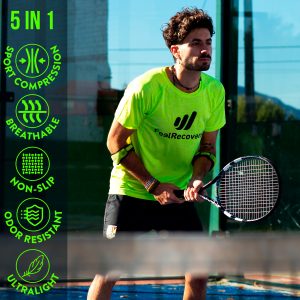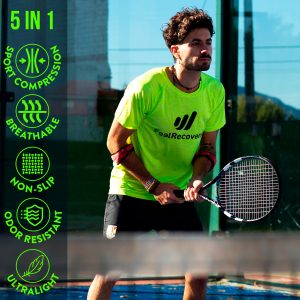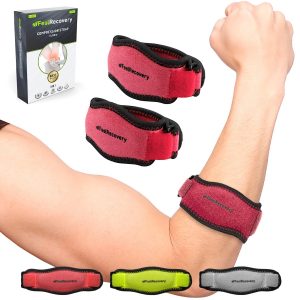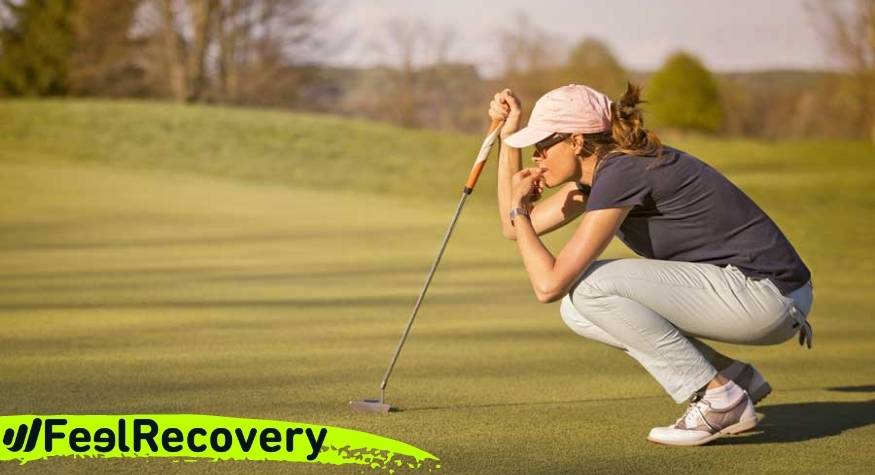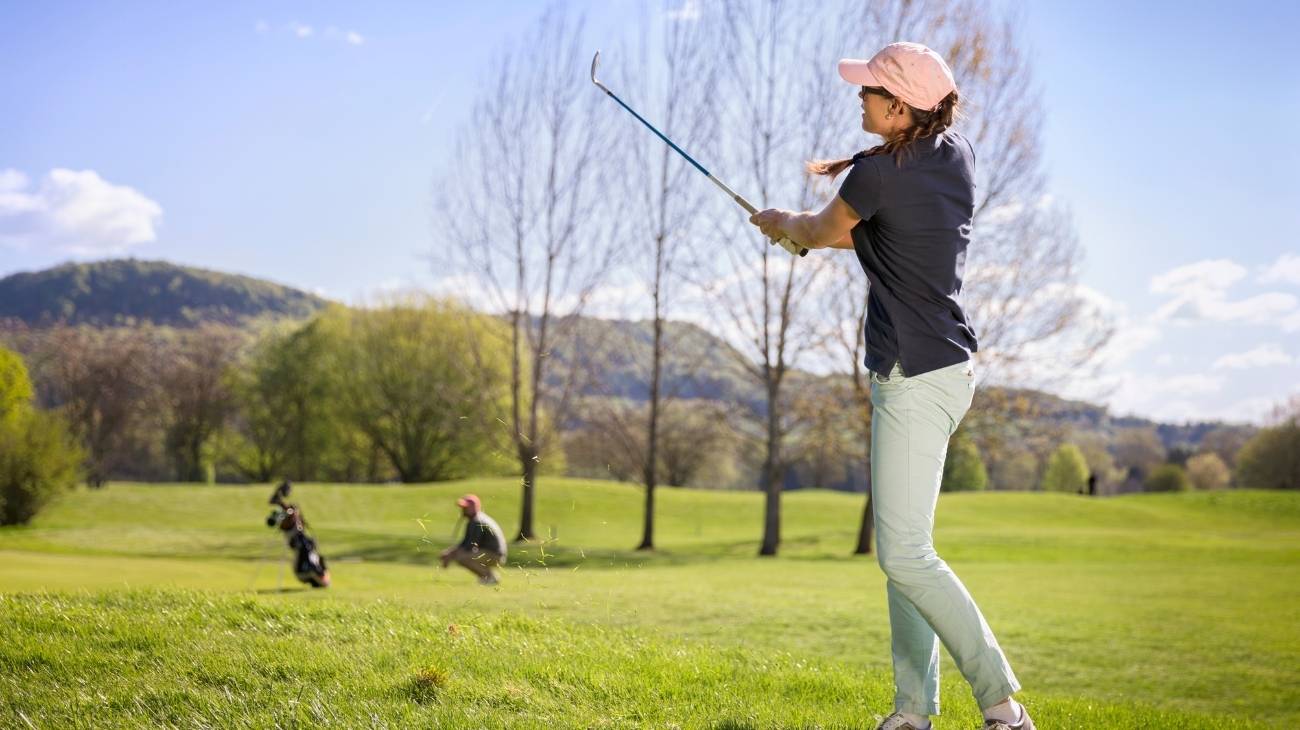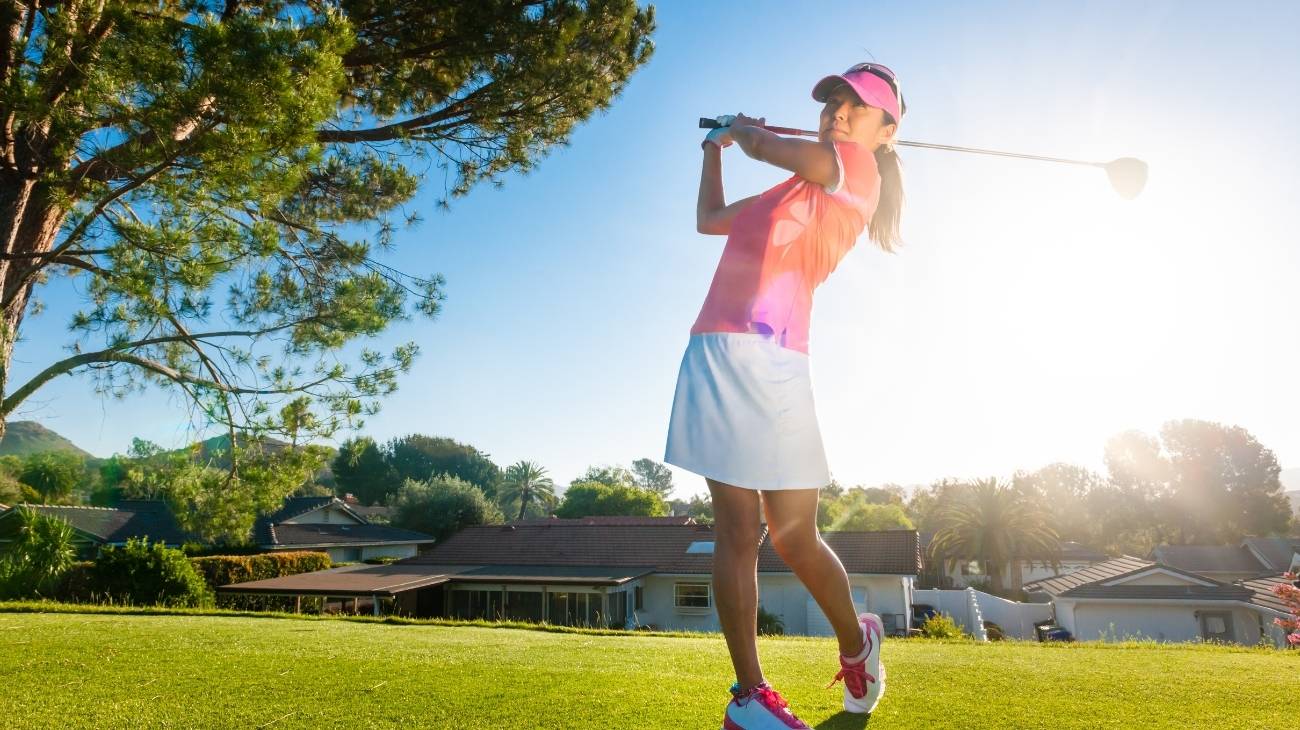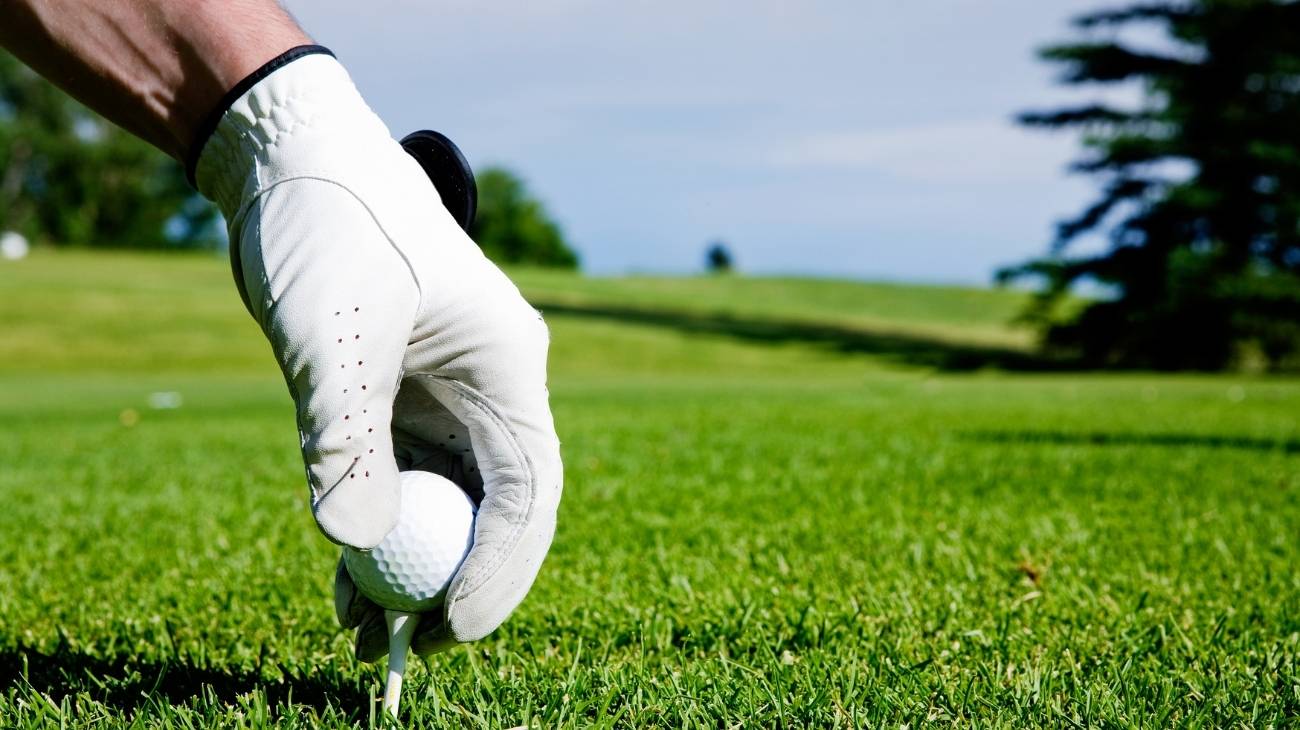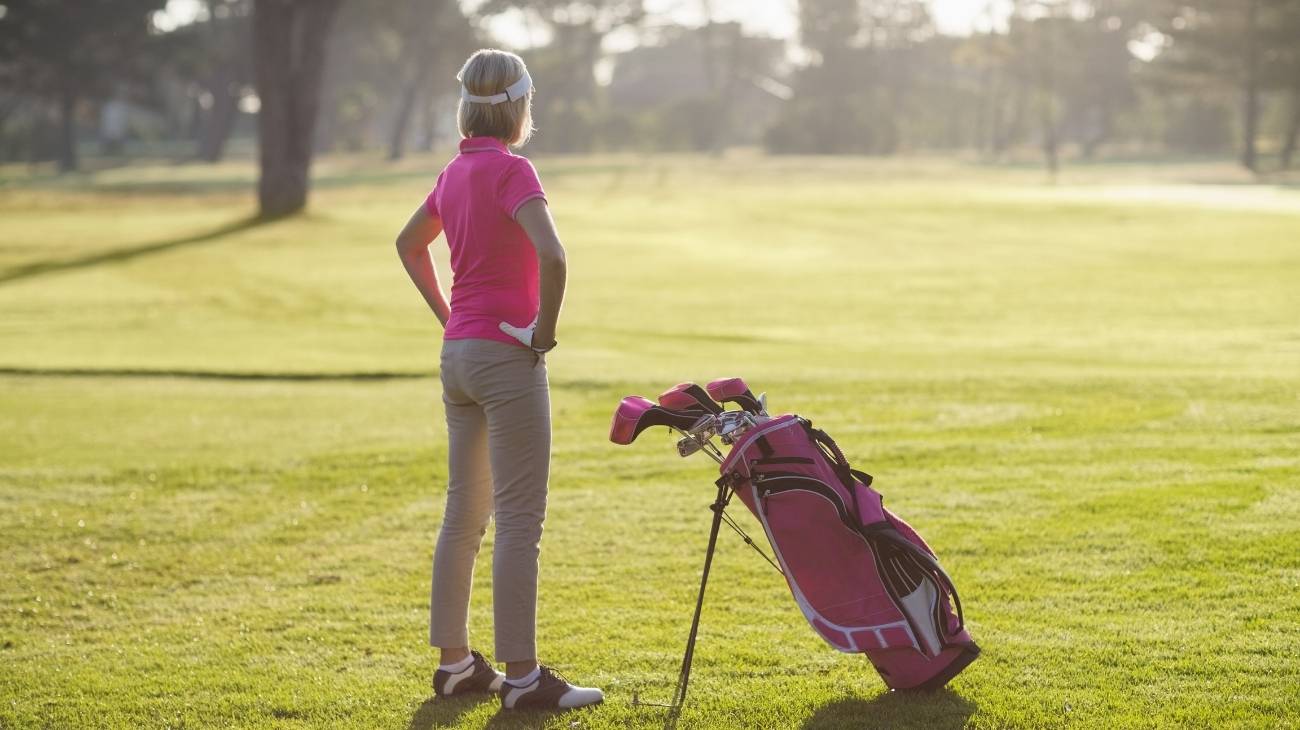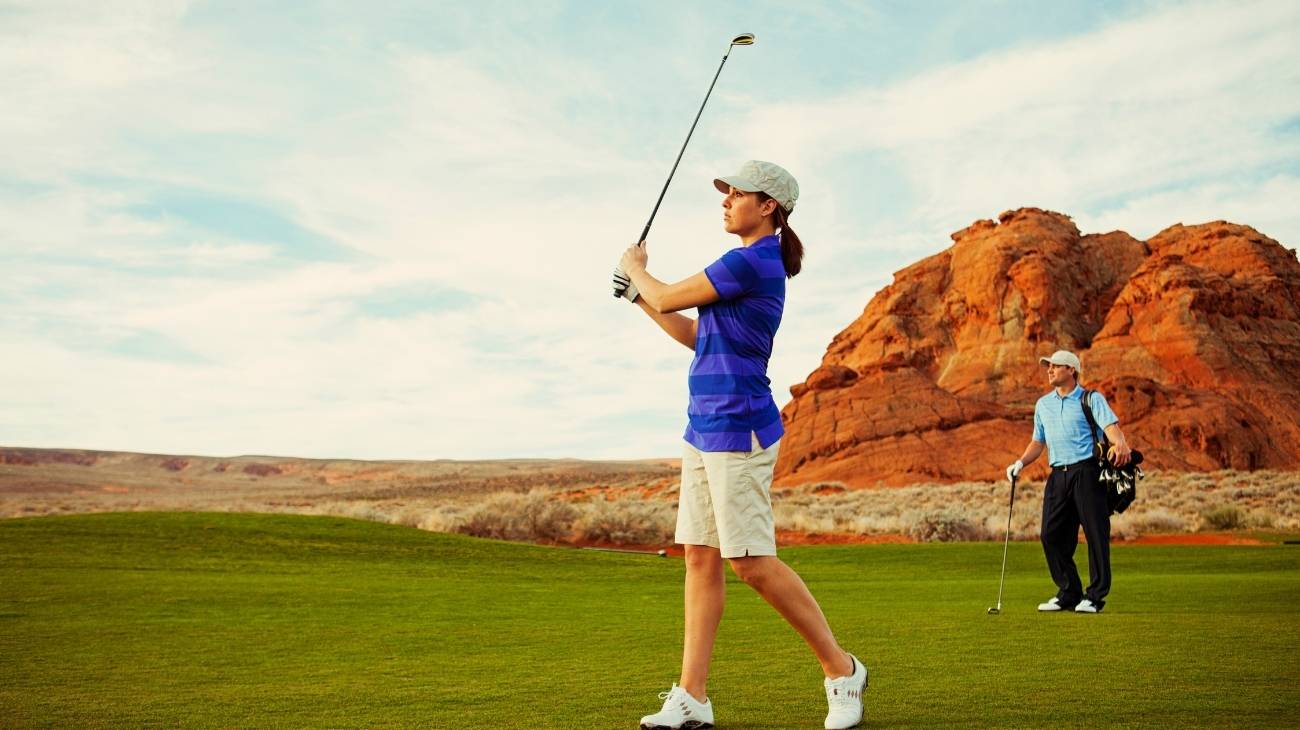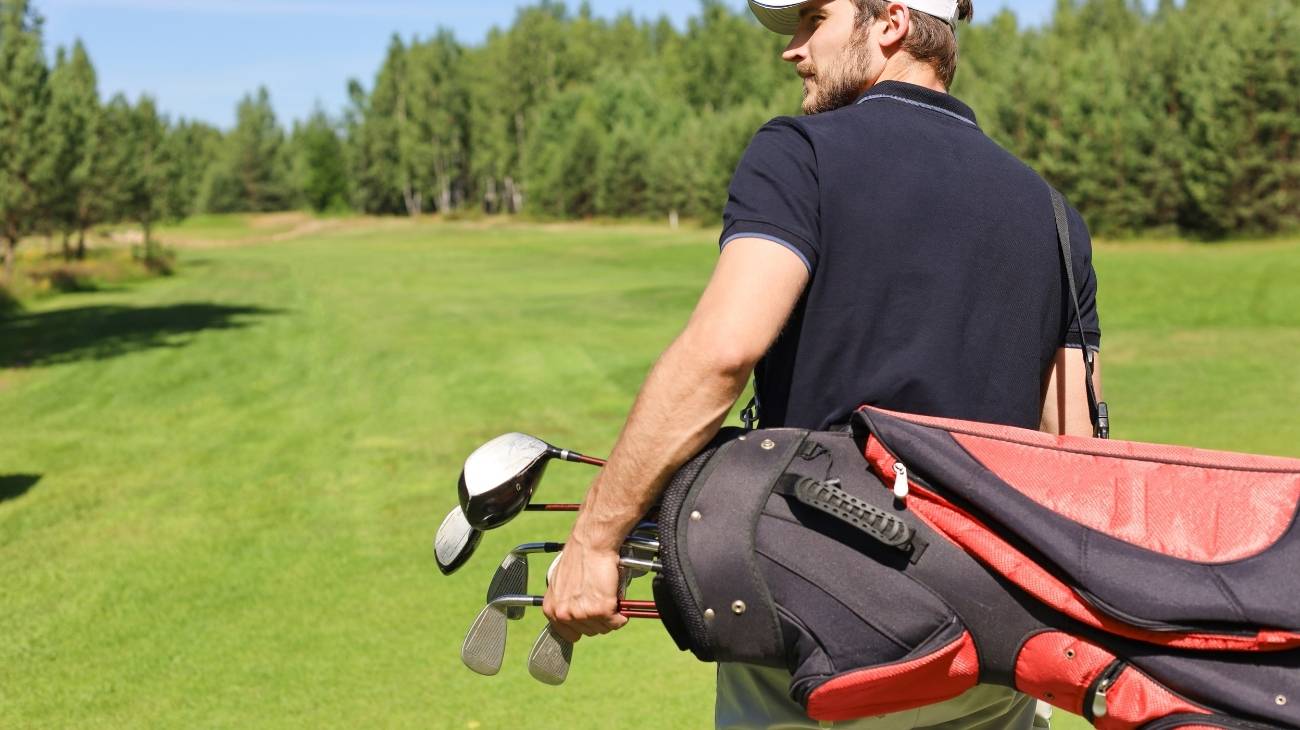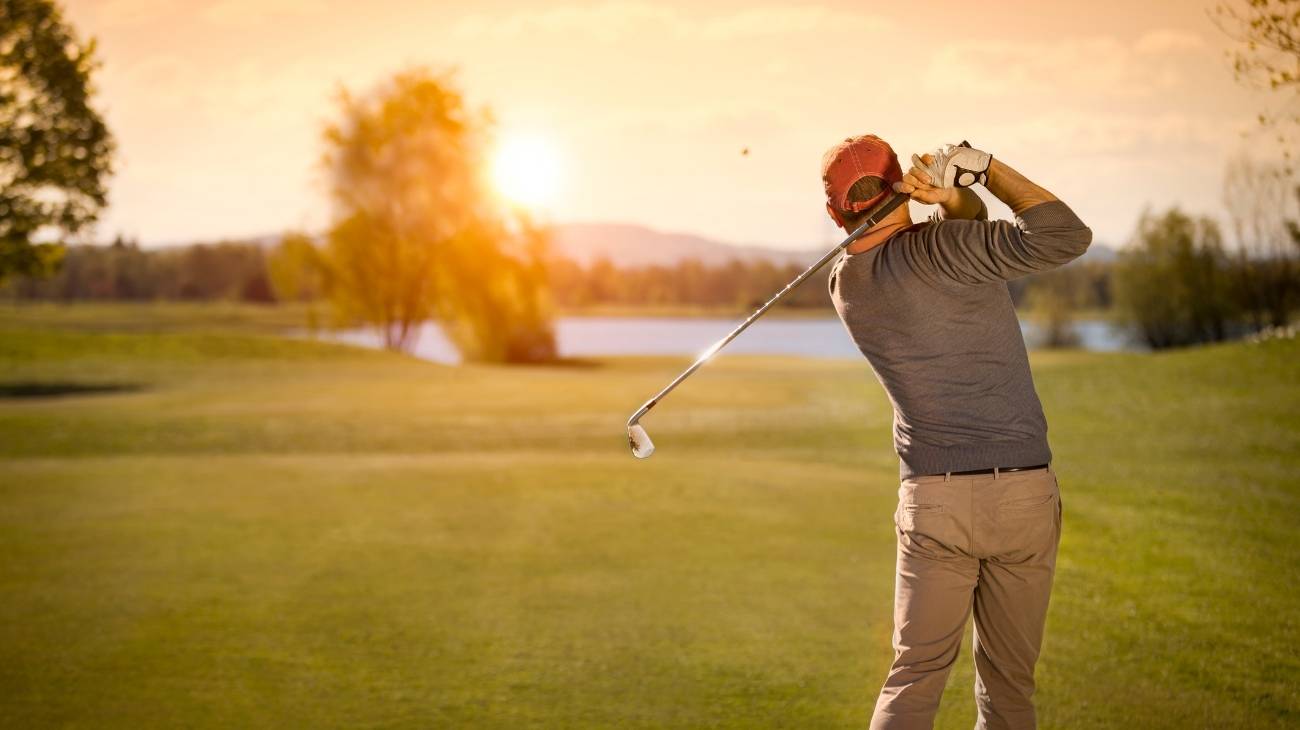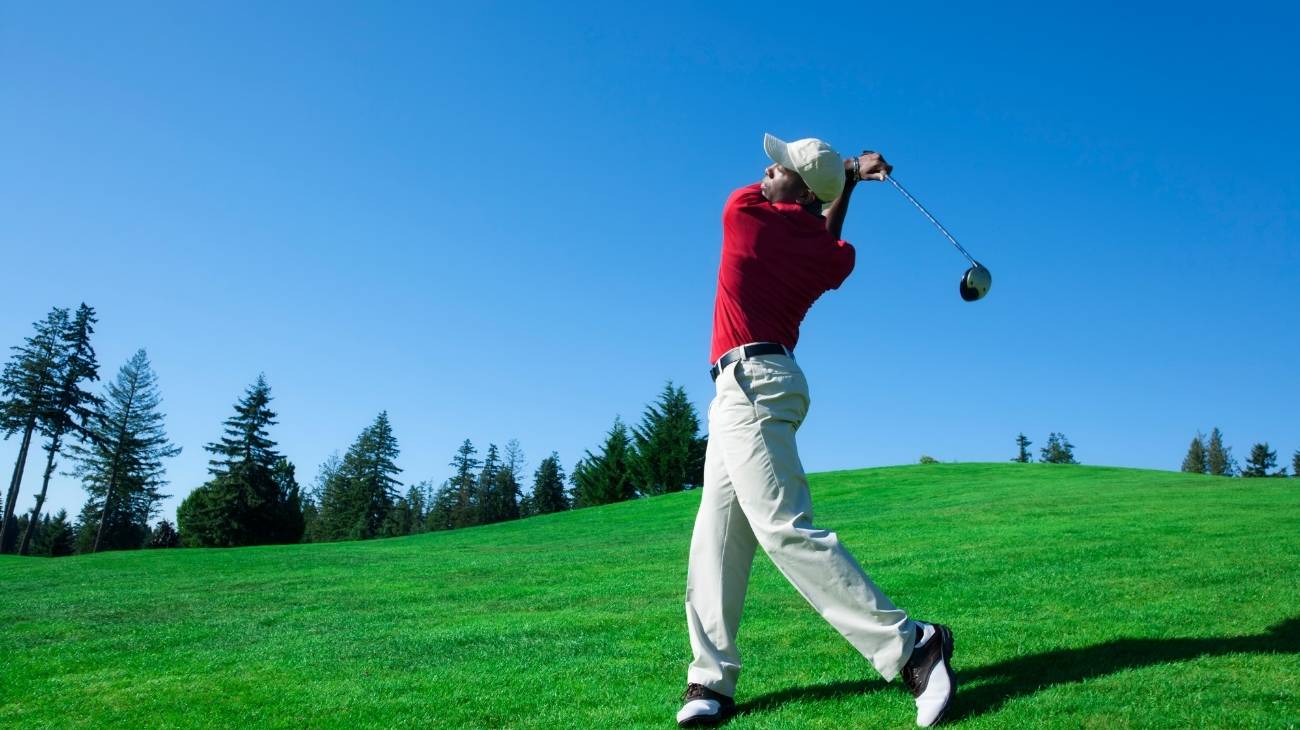According to statistics, one in 10 people have played golf on a casual or recreational basis. But although it may seem that anyone can play, the risks of injury are many, with the back being the area of the body that most amateurs suffer the most, with 55% of all injuries sustained.
When alternative treatments, such as massage and acupressure, do not have a positive effect on recovery, then surgery is needed. Here are the most effective surgical procedures depending on the type of injury.
What are the most common types of injuries when playing golf?
Before we begin to explain the surgical procedures, you should know what the most common sports injuries are when you play golf. Keep in mind that it is a sport with medium muscular and articular demand, but that it generates consequences in your organism.
- Supraspinatus tendonitis: The repetitive and intense movements of golf when hitting the ball cause the supraspinatus tendon to become inflamed and feel uncomfortable twinges. If the injury is left untreated, this tendon can rupture partially or completely, so recovery will be slower and more complicated.
- Cervical discomfort: Progressive deterioration due to overwork and poor posture causes the discs in the cervical spine to shift and cause neck and head pain. Although the spine is a flexible formation and resistant to movement, a bad technique will generate muscular overloads and in turn the displacement of discs. It often does not require surgery, but does require a lot of rest.
- Epitrochleitis: This is a hand injury that involves inflammation of the tendon that allows the wrist to flex. The intensity occurs when the hand takes its typical position to grip the club. The force of the swing and poor technique leads to increased wear and tear on the tendon until it becomes painful, inflamed and difficult to move the wrist freely.
- Tennis elbow: The clinical term is epicondylitis and is the inflammation of the group of tendons that connect the protrusions of the arm bones, especially those closest to the joints. The older the player, the more likely they are to be injured if they continue to be active in golf. The high stress on the tendons wears down the fibres until they become irritated.
- Hand pain: This is an injury that occurs in novice players. Before achieving a perfect shot, you must first practice and fail. There are strokes that hit the ground and it is the hand that receives the mistreatment. There is a reddening of the palm of the hand and brief spasms. A bad grip also causes this injury, which usually disappears with improvement in technique.
- Lower back pain: The initial cause is likely to be muscle contractions, but may also be due to disc displacements in the lower back. Similar to cervical displacements, but in the lower spine. The rotation of the swing activates all the joints of the body and the entire spine. If the swing is exaggerated in order to hit the ball harder, this intensity will be felt in the back.
- Achilles tendonitis: There are several ways in which this tendon can be injured: by small tears in its fibres, by the formation of cysts and by wear and tear due to overwork, although in golf it is usually caused by a bad hitting technique that causes the inertia of the swing to impact on this fibrous cord.
- Metatarsalgia: This is an ailment in the sole of the foot, as a consequence of poor footwear or a bad footing due to orthopaedic deformities. The inflammation originates in the metatarsal and is not an injury that requires surgery, but it is somewhat annoying when you need to walk long distances in search of the golf ball. Remember that shoes should not be too tight and should not be too big.
Best products for golf injury recovery
Bestseller
-
2 Elbow Compression Sleeve (Black/Gray)
$19.95 -
2 Elbow Compression Sleeve (Green/Navy)
$19.95 -
2 Elbow Compression Sleeve (Pink/Bordeaux)
$19.95 -
2 Knee Compression Sleeve (Black/Gray)
$19.95 -
2 Knee Compression Sleeve (Green/Navy)
$19.95 -
2 Knee Compression Sleeve (Pink/Bordeaux)
$19.95 -
2 Tennis Elbow Brace (Black/Gray)
$14.95 -
2 Tennis Elbow Brace (Green/Navy)
$14.95 -
2 Tennis Elbow Brace (Pink/Bordeaux)
$14.95 -
Acupressure Mat and Pillow (Black/Gray)
$49.95 -
Acupressure Mat and Pillow (Green/Navy)
$49.95 -
Acupressure Mat and Pillow (Pink/Bordeaux)
$49.95 -
Acupressure Pillow (Black/Gray)
$29.46 -
Acupressure Pillow (Green/Navy)
$29.46 -
Acupressure Pillow (Pink/Bordeaux)
$29.46 -
Back Support Belt (Black)
$34.95 -
Back Support Belt (Green)
$34.95 -
Back Support Belt (Pink)
$34.95 -
Foot Massage Roller for Plantar Fasciitis (Black)
$19.95 -
Foot Massage Roller for Plantar Fasciitis (Green)
$19.95 -
Foot Massage Roller for Plantar Fasciitis (Pink)
$19.95 -
High Density Foam Roller for Muscle (Black/Gray)
$29.95 -
High Density Foam Roller for Muscle (Green/Navy)
$29.95 -
High Density Foam Roller for Muscle (Pink/Bordeaux)
$29.95 -
Ice Massage Roller Ball (Black)
$39.95 -
Ice Massage Roller Ball (Green)
$39.95 -
Ice Massage Roller Ball (Pink)
$39.95 -
Microwave Heating Pad for Back Pain Relief (Extra Large) (Hearts)
$29.95 -
Microwave Heating Pad for Back Pain Relief (Extra Large) (Oxford)
$29.95 -
Microwave Heating Pad for Back Pain Relief (Extra Large) (Sport)
$29.95 -
Microwaveable Heating Pad for Pain Relief (Hearts)
$19.95 -
Microwaveable Heating Pad for Pain Relief (Oxford)
$19.95 -
Microwaveable Heating Pad for Pain Relief (Sport)
$19.95 -
Pack 2 In 1 Foam Roller High + Soft Density (Black/Gray)
$29.95 -
Pack 2 In 1 Foam Roller High + Soft Density (Green/Navy)
$29.95 -
Pack 2 In 1 Foam Roller High + Soft Density (Pink/Bordeaux)
$29.95 -
Sacroiliac Support Belt (Black)
$24.95 -
Sacroiliac Support Belt (Green)
$24.95 -
Sacroiliac Support Belt (Pink)
$24.95 -
Shoulder Support Brace (Black)
$24.95 -
Shoulder Support Brace (Green)
$24.95 -
Shoulder Support Brace (Pink)
$24.95 -
Soft Density Foam Roller for Recovery (Black)
$29.95 -
Soft Density Foam Roller for Recovery (Green)
$29.95 -
Soft Density Foam Roller for Recovery (Pink)
$29.95 -
Trigger Point Massage Stick (Black)
$14.95 -
Trigger Point Massage Stick (Green)
$14.95 -
Trigger Point Massage Stick (Pink)
$14.95 -
Wrist Brace (Black/Gray)
$19.95 -
Wrist Brace (Green/Navy)
$19.95 -
Wrist Brace (Pink/Bordeaux)
$19.95
How to apply the RICE therapy to treat first aid injuries in golfers?
As a good golfer, you always need to be prepared for any eventuality on the 18 holes of your game. That's why we show you the PRICE therapy that serves as first aid and that will help you whenever you have a minor injury.
- Protection: Find a safe area for the injury to be checked. Use a classic or elastic bandage to cover the injured part and avoid involuntary and accidental sudden movements. This is the first step to take if you are in a secluded part of the golf course and do not have a trolley to transport you.
- Rest: Physical and joint activity should be kept to a minimum while the injury is being examined. This is a basic step, but vital because the tissues must relax to begin to recover. If you see swelling and bruising, you should pay special attention to the following steps of the PRICE therapy.
- Ice: This stage begins to address the swelling, pain and oedema that form with moderate injuries. Remember to apply the cold for a maximum of 20 minutes, after which you should offer a 10-minute break. This will prevent first-degree skin burns and numbness of the tissues due to the cold.
- Compression: With the support of ankle, elbow and wrist braces, it is advisable to exert a little pressure on the affected joint, but not too much to avoid completely cutting off circulation. If you feel tingling in the injury it is because the compression garment or bandage is too tight.
- Elevation: This is the fifth and last step to follow. It consists of raising the affected limb above the level of the heart, thus helping the body to deflate the tissues and minimise pain. This step can last up to 72 hours if there is no significant improvement.
Surgical treatments to cure serious or chronic injuries in golfers
Maintaining a good attitude and commitment to recovery is sometimes not enough to overcome injuries, in these cases you are likely to receive invasive procedures.
Shoulder injuries
There are many injuries that can occur in the shoulder, but only those that we neglect and allow to progress are the ones that lead us to the operating theatre. The following are the most common:
- Surgery for acromioclavicular arthropathy: One way to correct the injury is with a resection of the clavicle, although the Mumford method is also applied. Both are performed by open surgery or by arthroscopy in which the inflamed cartilage of the clavicle is removed to prevent further wear and tear.
- Rotator cuff repair: this can be either open surgery or arthroscopy, in both cases the patient will be under general anaesthesia and the surgeon will proceed to reconstruct the ligaments and repair the affected muscles in an operation that can take more than 2 hours.
Elbow injuries
Few elbow injuries will lead to surgery, but as with the shoulder, they will if we do not treat them properly and allow them to progress. The most common are:
- Surgery for epicondylitis: In its more chronic state, this injury is corrected with arthroscopy. Local anaesthesia is also used and recovery is quick. It lasts a maximum of 45 minutes and the surgeon will make one or more cuts in the fibres to reattach them. After the operation, the patient can continue the recovery at home on the same day of the operation.
- Biceps repair: If it is a tear, a stitch is made to join the affected part of the muscle so that it can regenerate naturally. The patient is discharged the next day. A recovery phase of physiotherapy then begins before any attempt at swinging is resumed.
Hand and wrist injuries
The hands and wrists are usually parts of the body that require intervention as they contain many tendons and soft tissues that can be complicated to treat with non-invasive methods when injured. Among the most commonly performed procedures are:
- Toe fracture repair: When a dislocation damages the phalanges and ligaments of the toes, open surgery under local anaesthesia is required in which the bone is set back into place and, if broken, fixed with pins or screws. The affected tendons are also sutured.
- Dissemination of wrist ganglion: this is an outpatient procedure in which an incision is made in the area of the ganglion and the ganglion is cut to release the liquid it contains, causing it to spread.
Lower back and lumbar injuries
In golf, the back injuries that require surgery are those that become chronic and cannot be solved with classic physiotherapeutic treatment. Among the most common are:
- Herniated disc repair: an open operation is performed under general anaesthesia to return the displaced discs to their normal place. It should only be resorted to when all else fails as it is high risk and the rehabilitation time can take up to 6 months.
- Lumbar arthroscopy: this is usually performed to solve the pain caused by osteoarthritis of the lumbar spine and the inflamed cartilage is removed.
Hip injuries
Like the back, the hip often causes problems for golfers and it is normal that after years of playing the sport, certain ailments may arise that require surgical intervention, such as the following:
- Surgery for hip bursitis: The aim is to drain the fluid that accumulates in the bursa sac. Of the hip operations, it is the least complex and quickest to recover from.
- Hip replacement: this is a major surgery that is usually performed because of osteoarthritis or fractures in the joint. It involves the insertion of a prosthesis, which can be made of metal or very hard plastic.
Knee injuries
Although there are many injuries that can be caused in the knee, only two of them usually lead us to the operating theatre and we explain them below:
- Knee replacement: if we suffer from very advanced chronic osteoarthritis, the best option is to perform an open operation in which the joint is replaced by a metal prosthesis. Life will no longer be the same after this and we may have to limit ourselves to not playing golf for a long time.
- Cruciate ligament repair: with the help of a skin graft, these ligaments are reconstructed. A local anaesthetic is used and the broken bones are joined together and the rupture is corrected with the selected graft.
References
- Thériault, G., & Lachance, P. (1998). Golf injuries: an overview. Sports medicine, 26, 43-57. https://link.springer.com/article/10.2165/00007256-199826010-00004
- McCarroll, J. R. (1996). The frequency of golf injuries. Clinics in sports medicine, 15(1), 1-7. https://europepmc.org/article/med/8903705
- McHardy, A., Pollard, H., & Luo, K. (2006). Golf injuries: a review of the literature. Sports Medicine, 36, 171-187. https://link.springer.com/article/10.2165/00007256-200636020-00006
- Batt, M. E. (1992). A survey of golf injuries in amateur golfers. British journal of sports medicine, 26(1), 63-65. https://bjsm.bmj.com/content/26/1/63.short
- Edwards, N., Dickin, C., & Wang, H. (2020). Low back pain and golf: A review of biomechanical risk factors. Sports Medicine and Health Science, 2(1), 10-18. https://www.sciencedirect.com/science/article/pii/S2666337620300068
- Parziale, J. R., & Mallon, W. J. (2006). Golf injuries and rehabilitation. Physical Medicine and Rehabilitation Clinics, 17(3), 589-607. https://www.pmr.theclinics.com/article/S1047-9651(06)00028-3/fulltext
- Brandon, B., & Pearce, P. Z. (2009). Training to prevent golf injury. Current sports medicine reports, 8(3), 142-146. https://journals.lww.com/acsm-csmr/Fulltext/2009/05000/Training_to_Prevent_Golf_Injury.00011.aspx
- Fradkin, A. J., Cameron, P. A., & Gabbe, B. J. (2006). Opportunities for prevention of golfing injuries. International journal of injury control and safety promotion, 13(1), 46-48. https://www.tandfonline.com/doi/abs/10.1080/17457300500167693
- Metz, J. P. (1999). Managing golf injuries: technique and equipment changes that aid treatment. The Physician and Sportsmedicine, 27(7), 41-56. https://www.tandfonline.com/doi/abs/10.3810/psm.1999.07.917
- Lehman, G. J. (2006). Resistance training for performance and injury prevention in golf. The Journal of the Canadian Chiropractic Association, 50(1), 27. https://www.ncbi.nlm.nih.gov/pmc/articles/PMC1839980/

